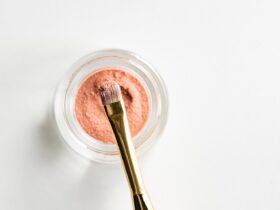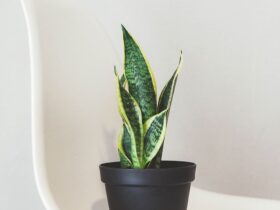The Importance of Scent Integrity in Perfume Atomizers
For perfume enthusiasts, the integrity of a fragrance is paramount. That captivating top note, the comforting heart, and the lingering base – each element plays a crucial role in the overall olfactory experience. A well-preserved fragrance can transport you to a specific memory, evoke a certain feeling, or simply make you feel confident and put-together. However, when perfume is decanted into an atomizer, it becomes vulnerable to several factors that can compromise its original scent profile.
Atomizers, while convenient for travel and application, introduce new challenges in maintaining scent integrity. Exposure to air, light, temperature fluctuations, and even the atomizer’s material itself can subtly or drastically alter the perfume’s composition over time. This can result in a diminished scent, a change in the notes, or even the development of unpleasant off-odors. Understanding these challenges is the first step in implementing practices to preserve your precious fragrances within atomizers.
Factors Affecting Perfume Scent in Atomizers
Several factors can contribute to the degradation of perfume scent within an atomizer:
- Exposure to Air (Oxidation): Oxygen is a potent catalyst for chemical reactions. When perfume is exposed to air, the aromatic molecules can oxidize, leading to changes in the scent profile. This process is accelerated in atomizers due to the repeated spraying action, which constantly introduces fresh air into the bottle.
- Exposure to Light (UV Degradation): Ultraviolet (UV) light can break down the chemical bonds in fragrance molecules. Clear atomizers, in particular, are more susceptible to this issue. Dark or opaque atomizers offer better protection against UV degradation.
- Temperature Fluctuations: Extreme temperatures, both hot and cold, can negatively impact perfume. Heat can accelerate the oxidation process and cause volatile components to evaporate more quickly. Cold temperatures, while slowing down some reactions, can potentially cause separation or crystallization of certain ingredients.
- Material of the Atomizer: The material of the atomizer itself can react with the perfume. Certain plastics, for example, can leach chemicals into the fragrance, altering its scent. Glass and stainless steel are generally considered the most inert and safest options.
- Contamination: Introducing foreign substances into the atomizer, such as dust, debris, or even traces of other fragrances, can contaminate the perfume and alter its scent.
- Storage Practices: Improper storage practices, such as leaving the atomizer uncapped or storing it in a humid environment, can accelerate the degradation process.
Best Practices for Maintaining Scent Integrity
To ensure that your perfume retains its original scent profile within an atomizer, consider the following best practices:
- Choose the Right Atomizer: Opt for atomizers made of inert materials like glass or stainless steel. Avoid plastic atomizers, especially those of unknown quality. Consider dark or opaque atomizers to minimize light exposure.
- Prepare the Atomizer Properly: Before filling an atomizer for the first time, thoroughly clean it with distilled water and allow it to air dry completely. This removes any residual manufacturing residues or contaminants. Do not use soap or detergents, as these can leave behind lingering scents that could interfere with the perfume.
- Minimize Air Exposure: Fill the atomizer almost to the top to reduce the amount of air inside. After each use, ensure the atomizer is tightly sealed to prevent air from entering.
- Protect from Light: Store your perfume atomizers in a dark, cool place away from direct sunlight. A drawer, cabinet, or even the original box are excellent options.
- Control Temperature: Avoid storing your atomizers in areas with extreme temperature fluctuations, such as bathrooms or cars. Ideally, keep them in a cool, stable environment.
- Regularly Clean Atomizers: If you plan to switch fragrances in an atomizer, clean it thoroughly before filling it with the new scent. Use distilled water and allow it to air dry completely. For persistent scents, you can use a small amount of pure ethanol (alcohol) designed for perfume use to rinse the atomizer. Ensure all traces of alcohol are gone before adding the new perfume.
- Use a Syringe for Filling: When decanting perfume into an atomizer, use a syringe to minimize air exposure and prevent spillage. Avoid pouring directly from the perfume bottle, as this can introduce contaminants.
- Label Your Atomizers: Clearly label each atomizer with the name of the fragrance it contains. This prevents accidental mixing of scents and helps you keep track of which atomizers you’ve filled.
- Limit Exposure Time: Atomizers are best used for short-term storage. If you plan to store a perfume for an extended period, it is generally better to keep it in its original bottle. Consider atomizers for travel or daily use, and refill them as needed.
- Monitor the Scent: Regularly check the scent of your perfumes in atomizers. If you notice any changes in the fragrance profile, it may be time to replace the atomizer or transfer the perfume back to its original bottle.
Special Considerations for Vintage or Delicate Fragrances
Vintage or particularly delicate fragrances require extra care when stored in atomizers. These fragrances may contain ingredients that are more susceptible to degradation or reaction with certain materials. It is especially crucial to use glass or stainless steel atomizers and to minimize exposure to air, light, and temperature fluctuations. Consider investing in specialized atomizers designed for preserving delicate fragrances.
Conclusión
Maintaining the scent integrity of perfume in atomizers requires diligence and awareness of the factors that can compromise a fragrance’s original profile. By following the best practices outlined above, you can significantly prolong the lifespan and enjoyment of your favorite scents when using atomizers. Choosing the right atomizer, protecting it from environmental factors, and practicing proper cleaning and storage techniques are all essential steps in preserving the artistry and beauty of your perfumes.
Preguntas más frecuentes (FAQ)
















Dejar una respuesta